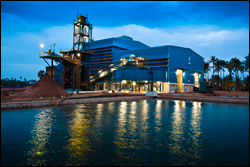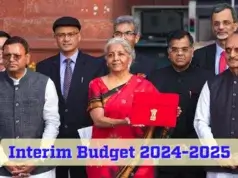
Chairman & Managing Director
V.V. Group
With the NDA government keen to fulfil the BJP’s manifesto promises of boosting growth and infrastructure development as well as providing affordable houses to the masses by 2022, it is imperative to ensure mining activities are brought back on track, says S. Vaikundarajan, Founder, Chairman & Managing Director of V.V. Group, which has transformed from a simple mining company into a business conglomerate.
During the past five years, India’s mining industry has been locked in a tango of forward and backward movements. The problems began when mining activities were banned in Karnataka by the Supreme Court due to alleged illegalities. Thereafter, iron ore mines in Odisha and Goa were also shut down for allegedly not following established norms. Before the ban on iron ore mining, India produced about 200 million tonnes (MT) of iron ore. With half of this being exported, India ranked as the world’s third-largest iron ore exporter. As the mining ban and curbs on exports continued, from 106 MT in 2008-09 iron ore exports nosedived to 18 MT in 2012-13.
Disruption of mining activities has affected all stakeholders badly. While the states and the Centre have suffered immense losses in royalties and other revenues, dozens of industries across India were affected because mined ores and their derivatives are universally used in almost all activities and industries. Automotives, aviation, construction, consumer goods, infrastructure, IT, telecom, manufacturing and a slew of other sectors depend partly or wholly upon mining. The bans therefore led to a gradual deceleration in activities of other industries too.
Bans and misperceptions
Not surprisingly, after mining was first banned in 2009, India’s current account deficit rose annually, while inflation also assumed alarming proportions. Thousands of jobs were also lost. Banks reported higher NPAs (non-performing assets) since individuals and corporate entities couldn’t pay EMIs due to loss of jobs or business. That workers and mining-dependent families were hard hit is best exemplified by Goa. With more than one-fourth of its population dependent upon mining, almost 430,000 people have been badly affected due to the disruption in mining activities.
Notwithstanding the importance of mined products in our daily existence, mining is one of the most demonised industries worldwide, besides being prey to various misperceptions. For instance, there is a universal belief that because most mined resources are finite these should be preserved for future generations. Two examples counter this belief. More mining actually leads to better exploration and the discovery of more resources. This is why the Indian Bureau of Mines keeps announcing increases in Reserves & Resources (R&R) of iron ore. From 25 billion tons in 2005, iron ore R&R rose to 28 billion tons in 2010, despite 800 MT ore being mined during this five-year period.
Next, consider heavy mineral resources or beach minerals. Unlike other major minerals that can be exhausted after heavy mining, heavy minerals are replenished regularly. Heavy minerals comprise an assemblage of silicates and oxides such as garnet, ilmenite, rutile, zircon and sillimanite present in beach sands. These minerals are formed and distributed by a combination of natural forces such as rain, ocean currents and wind, amongst others, and are accordingly termed ‘secondary deposits’. Since heavy minerals are formed by the elements, although mining can deplete such reserves, these minerals are inevitably replenished within a decade. With such resources, periodic mining in a sustainable manner makes sense so that all generations benefit from nature’s bounty.
Driving development
 Heavy minerals mining has also suffered because it is confused with river sand mining. In the latter, hundred percent of the sand is excavated and used. But in beach sand mining, only 15 to 20 per cent of the sand contains heavy minerals. The balance 80 per cent is therefore backfilled into the same beach area. Soil erosion and environmental impact are negligible or minimal in beach sand mining because of regular backfilling. While river sand mining caters exclusively to the construction industry, beach sand mining is important for a rainbow spectrum of industries. But the confusion between both forms of mining has led to a ban on heavy minerals mining, rendering 50,000 people jobless.
Heavy minerals mining has also suffered because it is confused with river sand mining. In the latter, hundred percent of the sand is excavated and used. But in beach sand mining, only 15 to 20 per cent of the sand contains heavy minerals. The balance 80 per cent is therefore backfilled into the same beach area. Soil erosion and environmental impact are negligible or minimal in beach sand mining because of regular backfilling. While river sand mining caters exclusively to the construction industry, beach sand mining is important for a rainbow spectrum of industries. But the confusion between both forms of mining has led to a ban on heavy minerals mining, rendering 50,000 people jobless.
Prolonged disruptions have forced domestic users of these minerals to import their requirements from abroad at higher rates. This causes a higher outgo of foreign exchange, inflating fiscal deficits and compounding inflation, apart from other problems.
With the NDA government keen to fulfil the BJP’s manifesto promises of boosting growth and infrastructure development as well as providing affordable houses to the masses by 2022, it is imperative to ensure mining activities are brought back on track. Without mineral resources being exploited judiciously, it will simply not be possible to fulfil the Government’s long-term vision of higher growth and all-round development.
As the Government unveils reform measures to kick-start infrastructure development, resumption of sustainable mining activities should be one of its top priorities. In the upcoming Budget too, the Government should introduce tax holidays and additional incentives so that India’s mining industry, including heavy minerals, is empowered to drive the engine of national growth, infrastructure development and job creation.











